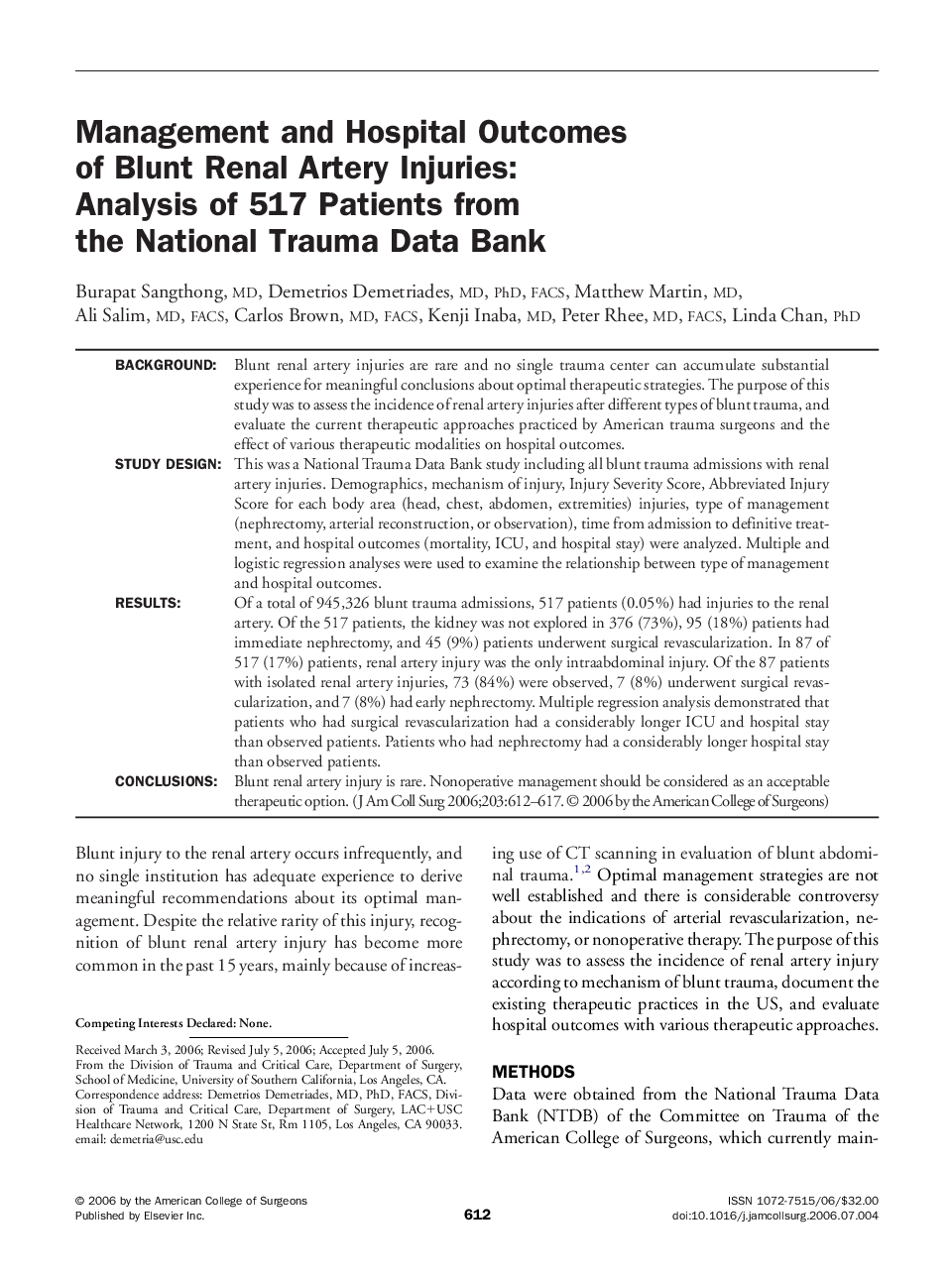| Article ID | Journal | Published Year | Pages | File Type |
|---|---|---|---|---|
| 4295070 | Journal of the American College of Surgeons | 2006 | 6 Pages |
BackgroundBlunt renal artery injuries are rare and no single trauma center can accumulate substantial experience for meaningful conclusions about optimal therapeutic strategies. The purpose of this study was to assess the incidence of renal artery injuries after different types of blunt trauma, and evaluate the current therapeutic approaches practiced by American trauma surgeons and the effect of various therapeutic modalities on hospital outcomes.Study designThis was a National Trauma Data Bank study including all blunt trauma admissions with renal artery injuries. Demographics, mechanism of injury, Injury Severity Score, Abbreviated Injury Score for each body area (head, chest, abdomen, extremities) injuries, type of management (nephrectomy, arterial reconstruction, or observation), time from admission to definitive treatment, and hospital outcomes (mortality, ICU, and hospital stay) were analyzed. Multiple and logistic regression analyses were used to examine the relationship between type of management and hospital outcomes.ResultsOf a total of 945,326 blunt trauma admissions, 517 patients (0.05%) had injuries to the renal artery. Of the 517 patients, the kidney was not explored in 376 (73%), 95 (18%) patients had immediate nephrectomy, and 45 (9%) patients underwent surgical revascularization. In 87 of 517 (17%) patients, renal artery injury was the only intraabdominal injury. Of the 87 patients with isolated renal artery injuries, 73 (84%) were observed, 7 (8%) underwent surgical revascularization, and 7 (8%) had early nephrectomy. Multiple regression analysis demonstrated that patients who had surgical revascularization had a considerably longer ICU and hospital stay than observed patients. Patients who had nephrectomy had a considerably longer hospital stay than observed patients.ConclusionsBlunt renal artery injury is rare. Nonoperative management should be considered as an acceptable therapeutic option.
